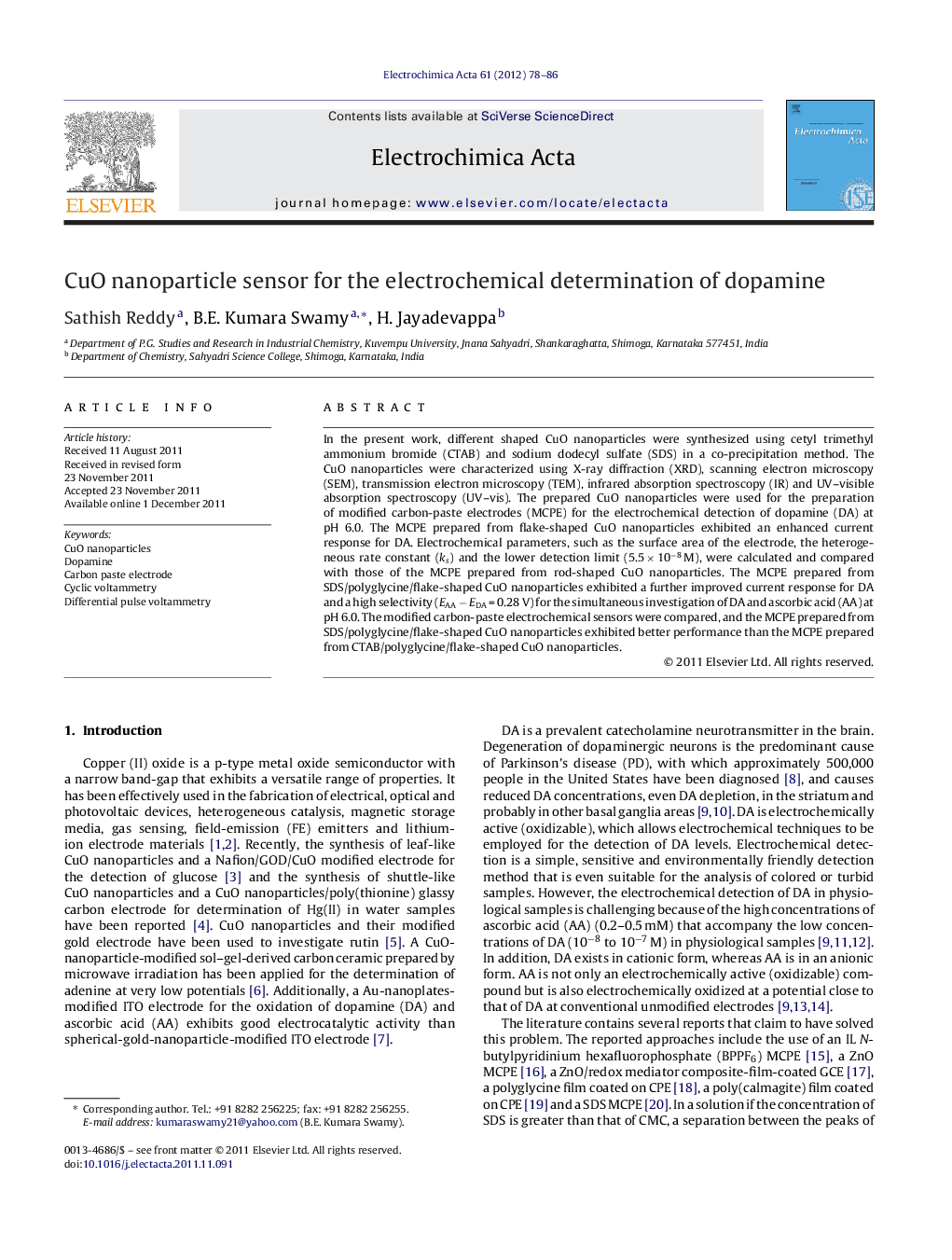| Article ID | Journal | Published Year | Pages | File Type |
|---|---|---|---|---|
| 188927 | Electrochimica Acta | 2012 | 9 Pages |
In the present work, different shaped CuO nanoparticles were synthesized using cetyl trimethyl ammonium bromide (CTAB) and sodium dodecyl sulfate (SDS) in a co-precipitation method. The CuO nanoparticles were characterized using X-ray diffraction (XRD), scanning electron microscopy (SEM), transmission electron microscopy (TEM), infrared absorption spectroscopy (IR) and UV–visible absorption spectroscopy (UV–vis). The prepared CuO nanoparticles were used for the preparation of modified carbon-paste electrodes (MCPE) for the electrochemical detection of dopamine (DA) at pH 6.0. The MCPE prepared from flake-shaped CuO nanoparticles exhibited an enhanced current response for DA. Electrochemical parameters, such as the surface area of the electrode, the heterogeneous rate constant (ks) and the lower detection limit (5.5 × 10−8 M), were calculated and compared with those of the MCPE prepared from rod-shaped CuO nanoparticles. The MCPE prepared from SDS/polyglycine/flake-shaped CuO nanoparticles exhibited a further improved current response for DA and a high selectivity (EAA − EDA = 0.28 V) for the simultaneous investigation of DA and ascorbic acid (AA) at pH 6.0. The modified carbon-paste electrochemical sensors were compared, and the MCPE prepared from SDS/polyglycine/flake-shaped CuO nanoparticles exhibited better performance than the MCPE prepared from CTAB/polyglycine/flake-shaped CuO nanoparticles.
Graphical abstractFigure optionsDownload full-size imageDownload as PowerPoint slideHighlights► The MCPE prepared from flake-shaped CuO nanoparticles exhibits good electrocatalytic activity for DA compared with MCPE prepared from rod-shaped CuO nanoparticles. ► The MCPE prepared from SDS/polyglycine/flake-shaped CuO nanoparticles strong electrocatalytic enhancement of redox peak currents for DA and large peak potential separation between EAA − EDA. ► Analysis of DA shows linearly increase in anodic peak current in presence of excess ascorbic acid. ► Ease of preparation and good analytical response supports its claim for use as a potential dopamine sensor.
